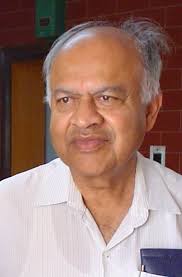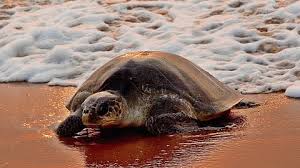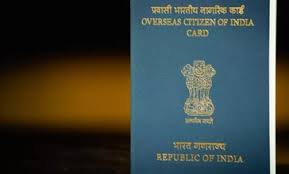Today’s Current Affairs: 21st May 2025 for UPSC IAS exams, State PSC exams, SSC CGL, State SSC, RRB, Railways, Banking Exam & IBPS, etc
Table of Contents
PBAT:

Kamalpur Nagar Panchayat in Tripura has introduced compostable bags made from PBAT as a sustainable alternative to single-use plastic (SUP).
- PBAT (Polybutylene Adipate Terephthalate) is a biodegradable thermoplastic polymer used as an eco-friendly substitute for traditional plastics.
- It is a copolymer of adipic acid, 1,4-butanediol, and terephthalic acid and can be processed using conventional plastic manufacturing methods.
- PBAT is often blended with other biopolymers to enhance its mechanical and barrier properties.
- PBAT is 100% compostable – breaks down into water, CO₂, and biomass under industrial composting conditions within 180 days.
- Flexible and tough, making it ideal for bags, films, and packaging.
- It is moisture-resistant, chemically inert, and offers good barrier properties.
Jarosite:

A recent study by a team of researchers from India has explored jarosite samples from Kachchh, Gujarat, a region with terrain conditions similar to Mars.
- Jarosite is a yellow-brown mineral composed of potassium, iron, and sulphate, commonly found in arid, saline environments.
- The study aimed to assess whether jarosite can act as a “natural clock” on Mars by tracking geological events through radiation-induced luminescence.
- The researchers collected six jarosite vein samples from Kachchh and examined them in a lab using a process based on luminescence dating.
- Luminescence refers to the light emitted by minerals when they release energy stored from natural radiation over time.
- The process involved:
- Washing grains with weak acid to enhance brightness.
- Irradiating, heating, cooling, and repeating the cycle to analyze luminescent properties.
- The team observed four distinct luminescent emissions at 100°C, 150°C, 300°C, and 350°C, even after heating the samples up to 450°C, indicating thermal stability.
- The Kachchh region in Gujarat was selected due to its extreme aridity and salinity, resembling Martian terrain conditions.
- This made it an ideal analog site to test the behavior of jarosite under extraterrestrial-like environments.
Vitamin D deficiency : silent epidemic

India, the world’s most populous country, suffers from widespread micronutrient deficiencies, with Vitamin D deficiency emerging as a silent epidemic.
- Vitamin D (also referred to as calciferol) is a fat-soluble vitamin that is naturally present in a few foods, added to others, and available as a dietary supplement.
- It is also produced endogenously when ultraviolet (UV) rays from sunlight strike the skin and trigger vitamin D synthesis.
- During periods of sunlight, vitamin D is stored in fat and then released when sunlight is not available.
- Very few foods have vitamin D naturally.
- The foods with the most are fatty fish (like salmon and tuna), liver, mushrooms, eggs, and fish oils.
- Vitamin D promotes calcium absorption and helps maintain adequate levels of calcium and phosphorus in the blood, which is necessary for healthy bones and teeth.
- Without sufficient vitamin D, bones can become thin, brittle, or misshapen.
- Vitamin D has other roles in the body, including reduction of inflammation as well as modulation of such processes as cell growth, neuromuscular and immune function, and glucose metabolism.
Vitamin D Deficiency: - A lack of vitamin D can lead to bone diseases such as osteoporosis or rickets. Osteoporosis is a disease in which your bones become weak and are likely to fracture (break).
- With chronic and/or severe vitamin D deficiency, a decline in calcium and phosphorus absorption by your intestines leads to hypocalcemia (low calcium levels in your blood).
- This leads to secondary hyperparathyroidism (overactive parathyroid glands attempting to keep blood calcium levels normal).
- Both hypocalcemia and hyperparathyroidism, if severe, can cause symptoms, including muscle weakness and cramps, fatigue, and depression.
- Anyone can have vitamin D deficiency, including infants, children and adults.
- Vitamin D deficiency may be more common in people with higher skin melanin content (darker skin) and who wear clothing with extensive skin coverage, particularly in Middle Eastern countries.
- Vitamin D supplements are commonly used to treat and prevent vitamin D deficiency.
Jayant Narlikar:

Eminent astrophysicist, science communicator, and Padma Vibhushan awardee Dr. Jayant Vishnu Narlikar passed away in Pune recently.
- He was one of India’s most distinguished astrophysicists and a global name in theoretical cosmology.
- He was born on July 19, 1938, in Kolhapur, Maharashtra.
- He earned his B.Sc degree from the Banaras Hindu University (BHU) in 1957.
- He later went on to Cambridge University for higher studies, becoming a Wrangler and earning the Tyson Medal in the Mathematical Tripos — a mark of top academic distinction.
- After returning to India, Narlikar joined the Tata Institute of Fundamental Research (TIFR) in 1972 and led the Theoretical Astrophysics Group until 1989, during which time the group gained international recognition.
- In 1988, the University Grants Commission (UGC) entrusted him with the task of establishing the Inter-University Centre for Astronomy and Astrophysics (IUCAA) inside the Savitribai Phule Pune University campus. As its founding director, he led IUCAA until his retirement in 2003.
- He served as President of the Cosmology Commission of the International Astronomical Union from 1994 to 1997.
- He is best known for co-developing the Hoyle–Narlikar theory of gravity.
- From 1999 to 2003, he led a space research experiment to collect microorganisms from the upper atmosphere (up to 41 km).
- He authored numerous popular science books and articles, and appeared frequently on radio and television to explain complex scientific ideas in simple terms.
- In 1996, UNESCO honoured him with the Kalinga Award for science popularisation.
- In 2004, he received the Padma Vibhushan, India’s second-highest civilian award.
- In 2014, the Sahitya Akademi honoured his Marathi autobiography with its highest prize for regional literature.
- He was a Fellow of all three national science academies of India, the Royal Astronomical Society of London, and the Third World Academy of Sciences.
- Jayant Narlikar is best known for co-developing the Hoyle–Narlikar theory of gravity—an alternative to Einstein’s general relativity and for championing the steady-state theory of the universe, a bold counterpoint to the widely accepted Big Bang model.
- The Hoyle–Narlikar theory offered a formulation of gravitation that synthesised Einstein’s general relativity with Mach’s principle, proposing that the inertial mass of a particle depends on the distribution of mass across the universe—an idea that challenged conventional big bang cosmology and continues to stimulate scientific debate.
Operation Olivia:

The Indian Coast Guard’s (ICG) annual mission, ‘Operation Olivia’, helped protect a record of over 6.98 lakh Olive Ridley turtles nested at the Rushikulya river mouth in Odisha recently.
- It is an important initiative of the Indian Coast Guard (ICG) conducted annually from November to May.
- It is aimed at ensuring safe nesting grounds for Olive Ridley turtles, particularly at Gahirmatha Beach and surrounding coastal areas of Odisha.
- The operation involves round-the-clock patrolling, aerial surveillance, and close coordination with local stakeholders to protect the turtles during their breeding season.
- Since the inception of the operation, the ICG has conducted over 5,387 surface patrol sorties and 1,768 aerial surveillance missions.
- These measures have led to a significant decline in threats such as illegal fishing and habitat disruption.
- In addition to enforcement, the Coast Guard has actively collaborated with coastal communities, promoting the use of Turtle Excluder Devices (TEDs) in fishing nets and signing Memorandums of Understanding (MoUs) with NGOs to support conservation education and sustainable fishing practices.
- This integrated approach has played a pivotal role in creating a safer and more sustainable environment for Olive Ridley turtles, whose conservation is key to maintaining marine biodiversity along India’s eastern coast.
Doctrine of Presumption of Constitutionality:

Countering the Supreme Court’s observation that a parliamentary statute enjoys a presumption of constitutionality, petitioners recently termed the new Waqf (Amendment) Act, 2025, a “creeping acquisition” of Waqf properties owned by the Muslim community.
- It is a fundamental principle in Indian constitutional law, rooted in the respect for legislative authority and the democratic process.
- This doctrine posits that legislation enacted by the Parliament or State Legislatures is presumed to be constitutional, and the burden of proving otherwise lies on the challenger.
- This principle assumes that laws enacted by the legislature are inherently valid and constitutional until proven otherwise.
- The doctrine finds its roots in the broader jurisprudential tradition that respects the separation of powers, a foundational element of democratic governance, ensuring that each branch of government operates within its constitutionally prescribed limits.
- The Supreme Court of India, as the apex judicial body, has consistently underscored this doctrine in its rulings, emphasizing that courts should strive to uphold the constitutionality of statutes unless there is a clear and unequivocal breach of constitutional provisions.
- It serves multiple purposes in the legal system.
- It ensures that the legislative process is respected, recognizing that elected representatives, accountable to the public, are best positioned to understand and address societal needs through legislation.
- This presumption also fosters stability and predictability in the legal system, as laws remain effective and enforceable until they are conclusively declared unconstitutional by the judiciary.
- Moreover, it upholds the democratic ethos by preventing undue judicial interference in legislative matters, thereby maintaining a delicate balance between the powers of the legislature and the judiciary.
Overseas Citizen of India : In News

The Union Home Minister and Minister of Cooperation launched the new Overseas Citizen of India (OCI) Portal in New Delhi recently.
- The Overseas Citizenship of India (OCI) Scheme was introduced by amending the Citizenship Act, 1955, in August 2005.
- The Central Government may, subject to such conditions and restrictions as may be prescribed, on an application made in this behalf, register as an OCI a foreign national
- who was a citizen of India at the time of, or at any time after, 26th January, 1950;
- who was eligible to become a citizen of India on 26th January, 1950;
- who belonged to a territory that became part of India after 15th August, 1947;
- who is a child or a grandchild or a great grandchild of such a citizen;
- who is a minor child of such persons mentioned above;
- who is a minor child and whose both parents are citizens of India or one of the parents is a citizen of India – is eligible for registration as an OCI cardholder.
- Besides, a spouse of foreign origin of a citizen of India or a spouse of foreign origin of an OCI Cardholder and whose marriage has been registered and subsisted for a continuous period of not less than two years immediately preceding the presentation of the application is also eligible for registration as an OCI cardholder.
- However, no person who or either of whose parents or grandparents or great-grandparents is or had been a citizen of Pakistan, Bangladesh, or such other country as the Central Government may, by notification in the Official Gazette, specify, shall be eligible for registration as an OCI Cardholder.
- The foreigner has to be ordinarily resident of India to be eligible to apply for OCI registration in India.
- ‘Ordinarily resident’ will mean a person staying in a particular country or in India for a continuous period of 6 months.
- The OCI cardholder professionals have the opportunity to pursue the profession in pursuance of the provisions contained in the relevant act, such as Doctors, Dentists, Nurses, Pharmacists, Advocates, Architects and Chartered Accountants.
- However, these professionals are required to appear for the All India Pre-Medical test or any such other relevant test for eligibility towards admission in fulfilment of the provisions contained in the applicable act.
Udanti Sitanadi Tiger Reserve:

Recent camera trap images from Chhattisgarh’s Udanti Sitanadi Tiger Reserve (USTR) have captured a promising resurgence in wildlife activity, showing extensive use of the forest by carnivores, herbivores, and omnivores alike.
- Udanti Sitanadi Tiger Reserve is located in the Gariaband and Dhamtari Districts of Chhattisgarh.
- It was established by joining the regions represented by Sitanadi and Udanti wildlife sanctuaries.
- The drainage system of the reserve consists of Mahanadi as the main river, along with Udanti, Sitanadi, Indravan, and Pairi Rivers as tributaries.
- The location of the reserve is strategic since it also connects with the Kanker and North Kondagaon forest divisions, forming a contiguous forest corridor to Indravati Tiger Reserve in the Bastar region.
- There are 19 named mountains in the reserve. Deo Dongri is the highest point. The most prominent mountain is Atānga Dongar.
- The forest types of USTR are “Tropical Peninsular Sal Forest and Southern Tropical Dry Deciduous Mixed Forest” (Champion & Seth, 1968).
- Along with the Indravati Tiger Reserve, the Udanti Sitanadi Tiger Reserve is an important refuge for the last few herds of the highly endangered Wild Buffalo.
- Apart from the tiger, other endangered and rare species are the Indian Wolf, Leopard, Sloth Bear, and Mouse Deer.
Directorate General of Foreign Trade:

The Government of India has updated its import policy for gold and silver to align customs tariffs with trade regulations, as notified by the Directorate General of Foreign Trade (DGFT).
- The Directorate General of Foreign Trade (DGFT) is an attached office of the Ministry of Commerce and Industry.
- It is responsible for the formulation and implementation of India’s Foreign Trade Policy (FTP).
- Headquartered in New Delhi, it operates through a network of 24 regional offices.
- Before 1991, DGFT was known as the Chief Controller of Imports & Exports (CCI&E).
- Post-liberalisation, it was restructured as DGFT to act as a trade facilitator.
- Key Functions of DGFT
- Implements India’s Foreign Trade Policy (Exim Policy) by issuing various schemes, licenses, and notifications.
- Issues the Importer Exporter Code (IEC)—a 10-digit unique code mandatory for all Indian importers and exporters.
- Regulates transit of goods across Indian borders as per bilateral treaties.
- Grants permissions for free export items listed in Schedule 2 of the export policy.
- Sets standard input-output norms to define the quantity of inputs allowed for the export of a specified quantity of output.
- Facilitates regional trade promotion, especially with neighbouring countries.
Shirui Lily Festival:
The 2025 edition of the festival was held after a two-year gap, caused by ethnic violence between the Meitei and Kuki-Zo communities in Manipur.The Shirui Lily Festival is a five-day cultural and ecological festival held in the Ukhrul district of Manipur, which is dominated by the Tangkhul Naga tribe.The festival celebrates the endemic Shirui Lily (Lilium mackliniae), a rare, bluish-pink bell-shaped flower found only in the Shirui Hills, about 18 km from Ukhrul town.
World Day for Cultural Diversity:
World Day for Cultural Diversity for Dialogue and Development, observed every year on May 21, is a global celebration recognizing the richness of the world’s cultures and the vital role intercultural dialogue plays in achieving peace and sustainable development. Established by the United Nations following the Universal Declaration on Cultural Diversity (2001), the day emphasizes the importance of embracing cultural differences and working together to promote inclusion, understanding, and global cooperation.
Spain and Liverpool Legend Pepe Reina to Retire at 42:
Former Spain and Liverpool goalkeeper Pepe Reina has officially announced that he will retire from professional football at the end of the 2024–25 season. Currently playing for Como in Serie A, the 42-year-old will conclude a remarkable career that has spanned over two decades and included over 1,000 competitive appearances across some of Europe’s top clubs. Reina, known for his consistency and leadership, will play his final match against Inter Milan.
National Anti-Terrorism Day 2025:
India observes National Anti-Terrorism Day every year on May 21 to commemorate the death anniversary of former Prime Minister Rajiv Gandhi. This day serves as a reminder of the catastrophic consequences of terrorism and violence, urging people to maintain peace, harmony, and unity in society. The observance also reflects India’s unwavering commitment to fighting terrorism and honoring the memory of all those who have lost their lives to such acts of violence.
Indian writer and activist Banu Mushtaq has etched her name in history by securing the 2025 International Booker Prize:
Indian author, lawyer, and activist Banu Mushtaq has made literary history by winning the International Booker Prize 2025 for her short story anthology, Heart Lamp. The award marks the first time a Kannada-language work has received this prestigious international honor. Translated into English by Deepa Bhasthi, the book highlights the nuanced struggles and resilience of Muslim women in southern India.




